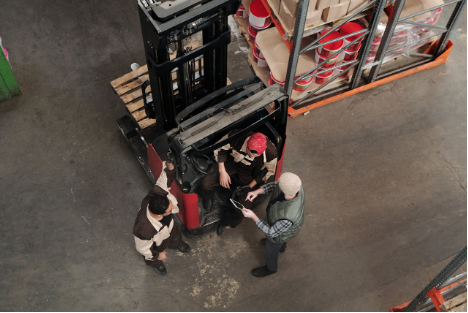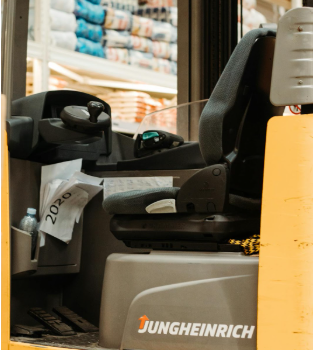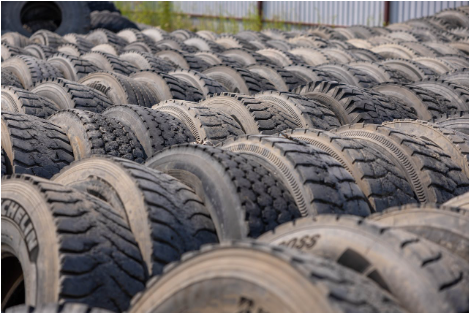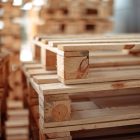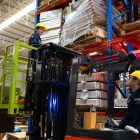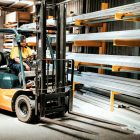Navigating the Australian Forklift Market: Top Brands, Market Trends and Purchasing Tips
The Australian forklift market is dynamic and diverse, reflecting the country’s robust industrial and commercial sectors. From small businesses to large enterprises, forklifts Australia play a vital role in ensuring operational efficiency and productivity. The versatility of forklifts allows them to serve a wide range of industries, from agriculture to retail, making them indispensable in many operations. Whether you’re in manufacturing, warehousing, or logistics, the right forklift can enhance your operations significantly, reducing downtime and increasing throughput.
Moreover, the Australian market is characterised by a mix of local and international players, each vying for a share of this lucrative sector. The diversity in the market ensures that businesses have access to a wide variety of models and technologies, each tailored to specific operational needs. This competition fosters innovation, pushing manufacturers to continuously improve their offerings to meet the evolving demands of the Australian business landscape. Understanding the unique aspects of this market is crucial for making informed purchasing decisions that can drive business success.
Top Brands in the Australian Forklift Market
Several global and local brands dominate the market, each offering unique features and benefits. Here are some of the top brands you should consider:
- Toyota Material Handling: Known for their reliability and innovation, Toyota forklifts are a popular choice in Australia. They offer a wide range of models suitable for various applications, from small electric pallet jacks to large internal combustion forklifts. Toyota’s commitment to quality and customer satisfaction has earned them a solid reputation, making them a go-to choice for businesses seeking dependable equipment.
- Crown Equipment: Crown is renowned for its robust and durable forklifts. Their focus on ergonomics and advanced technology makes them a preferred choice for many Australian businesses. Crown’s dedication to innovation is evident in their development of forklifts that prioritise operator comfort, which can lead to increased productivity and reduced operator fatigue.
- Hyster-Yale Group: With a reputation for producing tough and dependable forklifts, Hyster-Yale offers a range of models designed to handle demanding environments. Their forklifts are engineered to withstand harsh conditions, providing reliable performance even in the most challenging operations. This durability is a significant advantage for industries that require heavy-duty material handling solutions.
- Linde Material Handling: Linde forklifts are celebrated for their precision and performance. They offer innovative solutions that prioritise operator comfort and safety. Linde’s advanced engineering ensures smooth operation and precise control, making them an excellent choice for businesses that value efficiency and safety in their material handling processes.
- Komatsu Forklift Australia: Komatsu is known for its heavy-duty forklifts that deliver exceptional performance in challenging conditions. Their robust construction and powerful engines make them suitable for industries with demanding lifting requirements, ensuring that they can handle heavy loads with ease.
These brands have established themselves in the Australian market, providing reliable and efficient solutions for various industries. Each brand brings its own strengths, offering businesses a wide selection of forklifts to choose from, based on their specific needs and operational demands.
Current Market Trends in the Australian Forklift Industry
The forklift industry in Australia is constantly evolving, driven by technological advancements and changing business needs. Here are some of the latest trends:
Automation and Smart Technology
Automation is transforming the forklift market. With the rise of smart technology, businesses are increasingly adopting autonomous forklifts that can navigate warehouses and fulfill tasks without human intervention. These innovations are enhancing efficiency and reducing operational costs, providing a competitive edge in fast-paced industries. The integration of Internet of Things (IoT) technology further augments these capabilities, allowing for real-time monitoring and data analysis to optimise workflows.
The shift towards automation also addresses labor shortages and the growing need for precision in material handling. Automated forklifts can operate continuously without breaks, increasing productivity and ensuring consistency in operations. As technology continues to advance, the potential for even greater automation in the forklift sector presents exciting opportunities for businesses looking to innovate and streamline their processes.
Focus on Sustainability
Environmental sustainability is becoming a priority for many companies, and the forklift industry is no exception. Electric forklifts are gaining popularity due to their low emissions and cost-effectiveness. Many brands are investing in green technologies to meet the growing demand for sustainable solutions. This shift not only benefits the environment but also aligns with the increasing regulatory pressures for businesses to reduce their carbon footprint.
The move towards sustainability is also driven by consumer demand for eco-friendly products and practices. Companies are recognising the long-term financial benefits of adopting sustainable technologies, such as reduced energy consumption and lower operating costs. As sustainability becomes more embedded in business strategies, the adoption of electric forklifts is expected to continue its upward trajectory, paving the way for a greener future in material handling.
Increased Demand for Electric Forklifts
Electric forklifts are experiencing a surge in demand, primarily due to their environmental benefits and lower operating costs. They are ideal for indoor use, offering quiet operation and zero emissions. This makes them particularly suitable for industries such as food and beverage, where maintaining a clean and quiet environment is crucial.
The advancements in battery technology have further fueled the adoption of electric forklifts. Modern batteries offer longer operating times and faster charging capabilities, reducing downtime and increasing productivity. As more businesses recognise the advantages of electric forklifts, their market share is expected to grow, challenging traditional internal combustion models and leading the way in sustainable material handling practices.
Advanced Safety Features
Safety is paramount in material handling, and modern forklifts are equipped with advanced safety features. These include collision avoidance systems, automatic braking, and enhanced visibility features to protect operators and improve workplace safety. The implementation of these technologies reflects the industry’s commitment to reducing workplace accidents and injuries, which are not only costly but can also impact employee morale and productivity.
The focus on safety is also driven by regulatory requirements and the growing awareness of the importance of workplace health and safety. As a result, manufacturers are continually innovating to incorporate state-of-the-art safety features into their forklifts. Businesses that prioritise safety can benefit from reduced insurance premiums and a more motivated workforce, making the investment in advanced safety features a wise choice for long-term success.
Tips for Purchasing a Forklift in Australia
Purchasing a forklift is a significant investment, and several factors should be considered to make an informed decision. Here are some essential tips:
Assess Your Needs
Before purchasing a forklift, evaluate your specific needs. Consider the type of materials you handle, the weight and size of loads, and the operating environment. This will help you determine the type and capacity of the forklift required. Additionally, think about the future growth of your business and whether the forklift you choose can accommodate increased demand.
Understanding your operational requirements is critical to selecting a forklift that can enhance efficiency and productivity. Engaging with stakeholders across your organisation can provide valuable insights into specific needs and challenges, ensuring that the forklift you choose aligns with your overall business strategy.
Choose the Right Supplier
Selecting a reputable forklift supplier is crucial. Look for suppliers with a proven track record, comprehensive service offerings, and a wide range of options. A good supplier will provide expert advice and support throughout the purchasing process. They can also offer after-sales services, such as maintenance and repair, which can extend the lifespan of your forklift and ensure it remains in optimal condition.
Building a strong relationship with a reliable supplier can provide long-term benefits, including access to the latest technologies and exclusive deals. Take the time to research and select a supplier that understands your industry and can offer tailored solutions that meet your specific needs.
Consider Total Cost of Ownership
While the initial purchase price is important, consider the total cost of ownership, including maintenance, repairs, and energy consumption. Electric forklifts may have a higher upfront cost but offer significant savings in the long run due to lower fuel and maintenance expenses. Evaluating the total cost of ownership can help you make an informed decision that aligns with your financial goals and operational requirements.
It’s also important to factor in potential downtime costs if the forklift requires frequent repairs. Investing in a high-quality forklift may reduce unexpected expenses and contribute to more predictable budgeting. Consider working with your finance team to conduct a cost-benefit analysis that accounts for all potential expenses over the forklift’s lifespan.
Evaluate Financing Options
Explore different financing options to manage your investment effectively. Many suppliers offer flexible financing plans, leasing options, and hire-purchase agreements that can ease the financial burden. Understanding these options can help you choose a financing strategy that aligns with your cash flow and financial goals.
Discussing financing options with your financial advisor or accountant can provide additional insights and recommendations. They can help you evaluate the implications of each option, ensuring that your decision supports your business’s financial health and long-term success.
Prioritise Safety and Training
Ensure that the forklift you choose comes with advanced safety features. Additionally, invest in proper training for your operators to enhance safety and productivity. Well-trained operators are more likely to use equipment efficiently and safely, reducing the risk of accidents and increasing the lifespan of your forklifts.
Investing in ongoing training programs can also keep your team updated on the latest safety protocols and operational techniques. This commitment to safety not only protects your employees but also demonstrates your organisation’s dedication to creating a safe and productive work environment.
Inspect and Test
Before finalising the purchase, inspect the forklift and conduct a test drive. This allows you to assess its condition and performance, ensuring it meets your requirements. A thorough inspection can reveal potential issues that may not be apparent at first glance, providing peace of mind that you’re making a sound investment.
Involving your operations team in the inspection and testing process can provide additional perspectives and ensure that the forklift meets all operational needs. Their firsthand experience with the equipment can offer valuable insights, helping you make a well-informed decision.
Conclusion
Navigating the Australian forklift market requires careful consideration of various factors, including brand reputation, market trends, and purchasing strategies. By understanding the current landscape and evaluating your specific needs, you can make an informed decision that enhances your business operations. Whether you opt for a tried-and-true brand or explore the latest technological advancements, the right forklift can significantly impact your efficiency and productivity. The strategic selection of a forklift is an investment in your business’s future, offering opportunities for growth, innovation, and improved operational outcomes.

